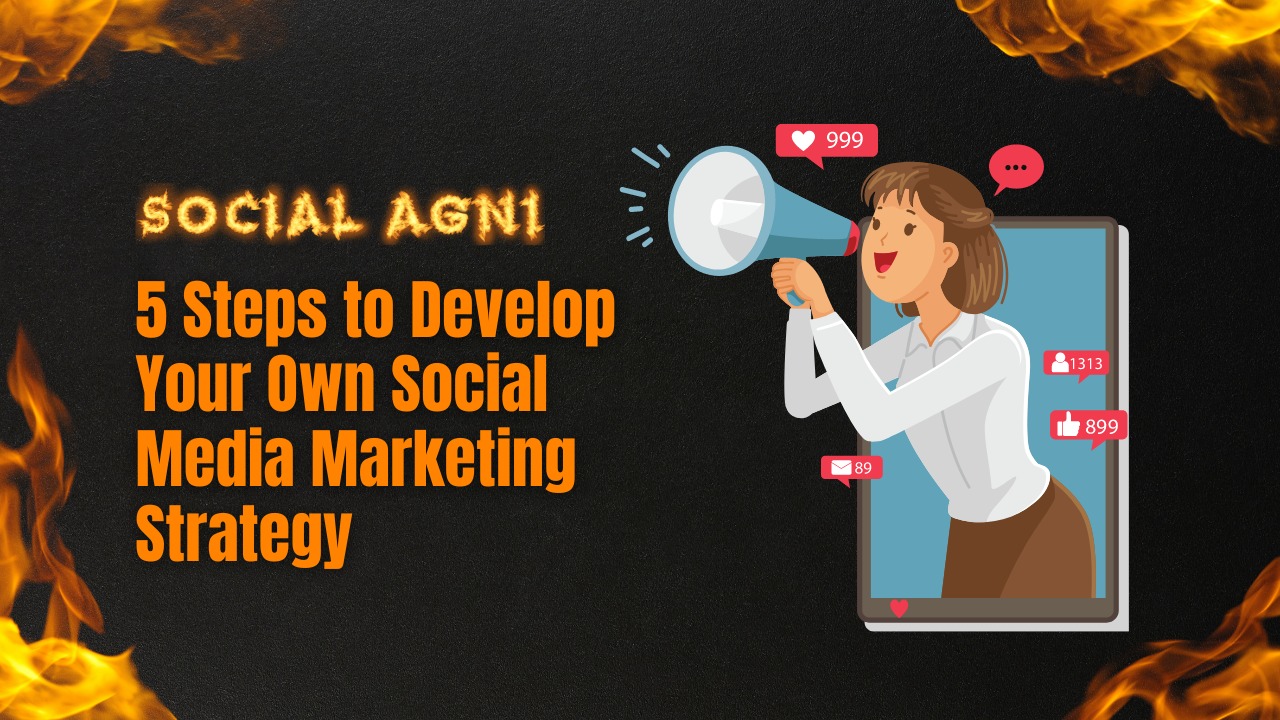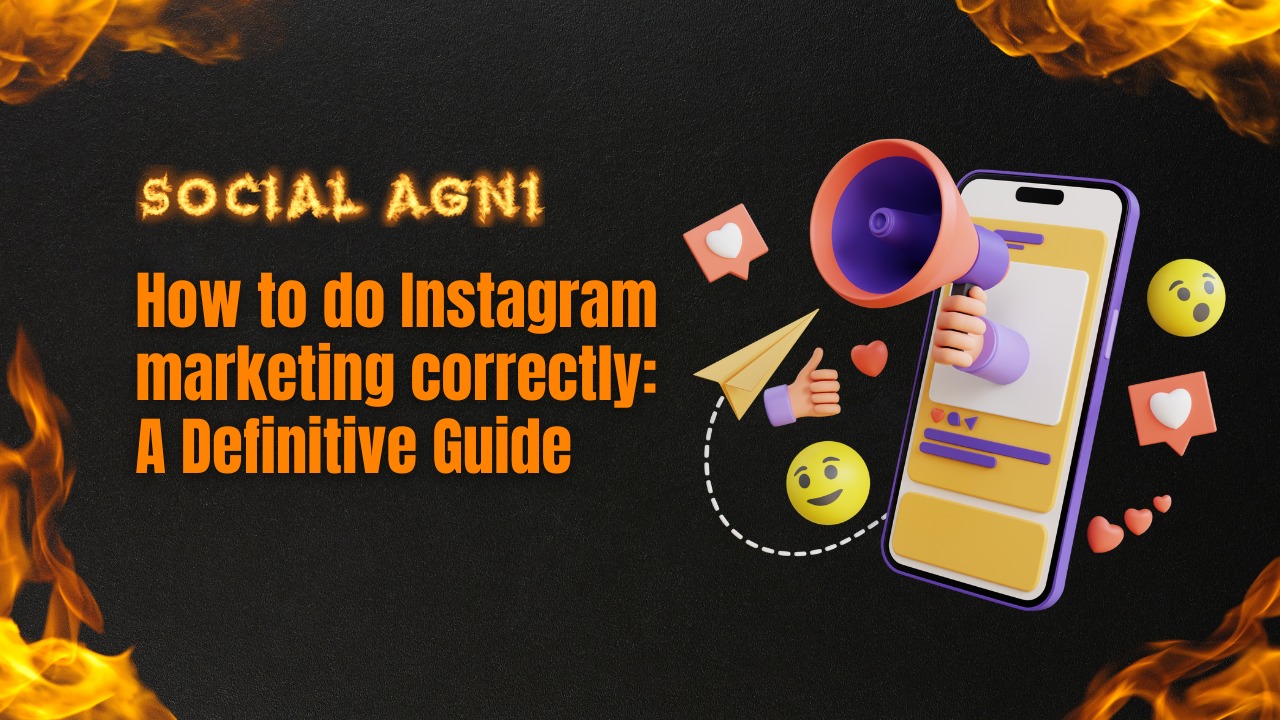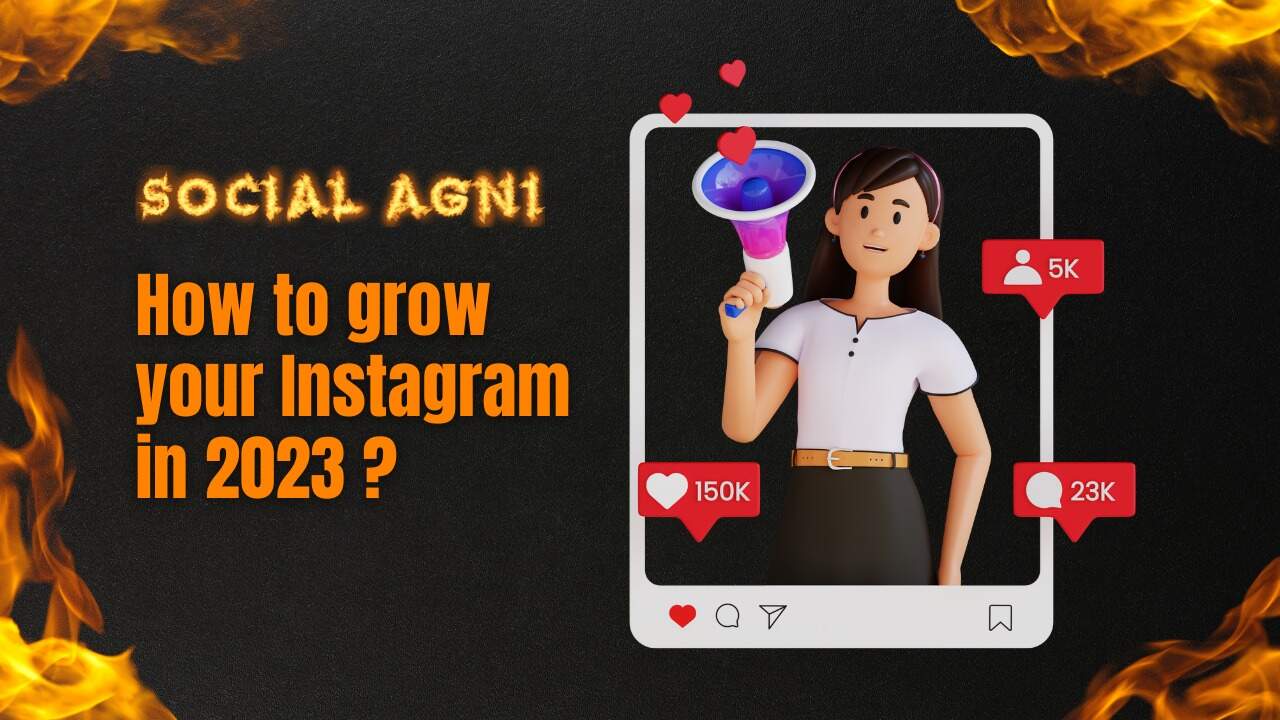Social networking is an essential component of our fast-paced digital life. Social media has changed how we connect with friends and family and discover new companies and goods. Businesses may use social media as a great marketing tool to reach and engage their target audience. Without a clear social media marketing plan, businesses may get lost in the noise and fail to reach their goals. Social media marketing is essential for all businesses. It shows how to use social media to market products and services and increase brand awareness, website traffic, leads, and sales. A well-planned approach helps companies stand out in a congested digital space. Set specific and quantifiable goals to start your social media marketing campaign. Your social media goals? Want to boost brand visibility, audience engagement, website traffic, or leads? Goals help you focus and measure strategy success. After setting goals, choose your audience. Who are your social media targets? Understanding your audience’s demographics, interests, online behaviors, and preferences is essential to providing relevant and engaging content. Your plan also requires selecting the correct social media channels. Different platforms have different users and features. Find out where your target audience is active and likely to engage with your material. This ensures resource allocation and target audience. Engaging content drives social media success. Your brand’s content should be informative, interesting, and consistent. Use photos, videos, infographics, and written content to engage your audience. To be active on social media, create a content calendar and update it regularly. Finally, tracking and analyzing your social media activities is crucial. Track reach, engagement, click-through rates, conversions, and ROI with social media analytics. These insights can help you tweak your plan, make data-driven decisions, and maximize your social media marketing effect. In conclusion, firms must design a social media marketing plan to use social media platforms. Set clear goals, identify your target audience, choose the correct platforms, create compelling content, and analyse your performance to create a digital strategy that produces significant results and helps your business succeed. Step 1: Set Clear Goals Successful social media marketing starts with goals. Without goals, social media activities might be unfocused. Goals help you focus, make decisions, and evaluate your plan. This phase will discuss the necessity of defining specific social media marketing goals and how to define them. When creating social media goals, ask yourself: What do I want to achieve? Depending on your company goals, goals should be SMART—specific, measurable, attainable, relevant, and time-bound. Social media marketing often seeks brand exposure. You may want to get followers or impressions. Driving website traffic is another goal. Social media efforts to obtain email addresses or contact information are also common goals. Most companies want to boost sales. Consider your business and sector while creating goals. Evaluate your social media performance. Check engagement rates, click-through rates, conversions, and social media campaign income. This will help you set realistic goals based on your present position and possible progress. Your ambitions should also match your corporate objectives. Consider how social media may aid your organization’s aims. If your firm wants to enter new markets, your social media goals might include reaching and connecting with local audiences. Document your goals clearly. This documentation guides strategy formulation and tracks success. Break goals into actionable KPIs. Make success simpler by assigning measurements and objectives to each KPI. Maintain your goals by monitoring and reviewing them. Set new goals to keep challenging yourself and growing. Finally, your social media marketing campaign needs defined goals. Objectives guide decision-making, quantify achievement, and give direction. SMART goals will help you use social media to promote brand exposure, website traffic, leads, and sales. Keep your goals current and difficult to advance your social media marketing. Step 2: Identify Your Target Audience Successful social media marketing requires targeting your audience. Knowing your audience and what they want helps you create content, messaging, and marketing that engages and connects. We’ll discuss how to identify your target audience at this stage. Start by establishing your target demographics. Consider age, gender, location, income, education, and employment. This information helps you understand and generate content for your target audience. Next, study your audience’s psychographics. Psychographics comprises lifestyle, values, interests, and motives. This information helps you generate personalized, emotive content that matches their tastes. Market research may reveal your audience. Use surveys, interviews, focus groups, and social media analytics to get feedback. Analyze your current customers to find patterns. This study will reveal audience demands, pain spots, wants, and goals. Buyer personas help you understand your target audience. Buyer personas are fictitious representations of ideal customers. Demographics, psychographics, goals, difficulties, and preferences are included. Creating thorough personas lets you humanize your target audience and tailor content to their needs and interests. Use social media analytics and insights to understand your audience’s online behavior. Facebook, Instagram, and Twitter give demographic, interaction, and interest data. This helps you determine which platforms your target audience uses and adapt your content. To construct a target audience profile, organize and capture all necessary information. This profile will guide your social media marketing. Your audience may change as your business does. To keep your plan current, regularly examine your audience’s preferences, behaviors, and needs. Use surveys, feedback forms, and social media to learn from your audience. In conclusion, targeting your audience is essential to social media marketing. You may personalize your content and marketing to connect and interact with your target audience by studying their demographics and psychographics, performing market research, establishing buyer personas, and analyzing social media analytics. Reassess your audience’s preferences and requirements to meet their changing expectations. Know your audience to generate engaging content that gets results. Step 3: Choose the Right Social Media Platforms Social media marketing requires selecting the proper channels. Each platform has distinct features, users, and communication styles. Reach and engage your target audience by choosing platforms that match their tastes and behaviors. This stage will discuss the significance of picking the correct social media networks and how to make
Today, Instagram is the most popular social media platform with over millions and millions of users. With such a vast audience, it is no wonder that businesses are using Instagram as a marketing tool to reach their target audience. However, simply having an Instagram account and posting content is not enough to succeed in Instagram marketing. In this article, we will provide you with a definitive guide on how to do Instagram marketing correctly. Set your goals Before starting any marketing campaign, it is essential to set your goals. What do you want to achieve with your Instagram marketing? Is it to increase brand awareness, drive traffic to your website, generate leads, or boost sales? Define your target audience Knowing your target audience is crucial in Instagram marketing. You need to know who you want to reach and what their interests are. This information will help you create content that resonates with your target audience and increase engagement. Create a content strategy Your content strategy should align with your marketing goals and target audience. Decide on the type of content you want to post and how often you want to post it. Your content should be visually appealing, relevant, and engaging. Optimize your profile Your Instagram profile should be optimized to attract and engage your target audience. Your profile should have a clear profile picture, a bio that highlights your brand’s unique value proposition, and a call-to-action button. Use hashtags Hashtags are essential in Instagram marketing as they help increase the visibility of your content. Research popular hashtags in your niche and use them in your posts to reach a broader audience. Engage with your audience Engagement is key to a successful Instagram marketing campaign. Respond to comments and direct messages promptly and engage with your audience through likes and comments on their posts. Collaborate with influencers Influencer marketing is a powerful tool in Instagram marketing. Collaborating with influencers in your niche can help increase your brand’s visibility and reach a wider audience. Use Instagram ads Instagram ads are a great way to reach your target audience and increase brand awareness. You can create ads that target specific demographics and interests, which can result in higher engagement and conversions. Measure your results Finally, it is essential to measure the results of your Instagram marketing campaign to see how well it is performing. Track your metrics, such as engagement, reach, and conversions, and adjust your strategy accordingly. How instagram is key success to e commerce Instagram has become a key success factor for e-commerce businesses in recent years. With over one billion active users, Instagram provides businesses with a massive audience to reach and engage with. In this article, we will discuss how Instagram can help drive success for e-commerce businesses. 1. Visual Appeal Instagram is a visual platform, and e-commerce businesses can take advantage of this by showcasing their products in visually appealing ways. High-quality images and videos that showcase the product’s features and benefits can grab the attention of users scrolling through their feed. This visual appeal can increase the likelihood of users clicking through to the e-commerce website to make a purchase. 2. Product Discovery Instagram’s explore page and search function make it easier for users to discover new products and brands. E-commerce businesses can use targeted hashtags and tags to ensure their products show up in relevant searches. Additionally, Instagram’s algorithms show users content that aligns with their interests, making it easier for businesses to reach their target audience. 3. Influencer Marketing Influencer marketing on Instagram has become a powerful tool for e-commerce businesses. Influencers have large followings and can promote products to their followers, driving traffic to the e-commerce website. Influencer partnerships can also help build brand credibility and trust with the influencer’s followers. 4. User-Generated Content User-generated content (UGC) is content created by users that showcase their experiences with a product. E-commerce businesses can leverage UGC on Instagram by reposting user photos and videos that feature their products. UGC helps to build social proof and credibility for the product, increasing the likelihood of other users making a purchase. 5. Social Commerce Instagram’s social commerce features allow e-commerce businesses to sell products directly through the platform. Instagram’s shopping features, such as product tags and the shopping tab on business profiles, make it easier for users to discover and purchase products without leaving the app. This convenience can increase conversion rates and sales for e-commerce businesses. Instagram algorithm for marketing brands The Instagram algorithm plays a crucial role in determining how content is distributed on the platform, making it an essential factor for brands that use Instagram for marketing. In this article, we will discuss the Instagram algorithm and how brands can leverage it to reach their target audience effectively. 1. Interest The Instagram algorithm analyzes a user’s past behavior, including the content they’ve liked and engaged with, to determine their interests. To reach your target audience effectively, brands should create content that resonates with their interests. Use relevant hashtags, post content that aligns with their interests, and engage with their content to increase the chances of your content appearing in their feed. 2. Recency Instagram prioritizes recent content, meaning newer posts will appear at the top of the feed. Brands should aim to post content regularly to ensure they remain top-of-mind with their target audience. Posting at optimal times, based on your audience’s behavior, can also increase the likelihood of your content appearing in their feed. 3. Relationships The Instagram algorithm prioritizes content from accounts that a user engages with frequently, such as their friends, family, and accounts they follow. Brands should aim to build relationships with their audience by engaging with their content and responding to comments and direct messages promptly. Collaborating with influencers and other brands in your niche can also help build relationships with their followers, increasing the chances of your content appearing in their feed. 4. Relevance The Instagram algorithm analyzes the content and captions of a post to determine its
Social media marketing has become one of the most popular ways to reach out to potential customers, and for good reason. It’s not just a great way to connect with people who are interested in your product or service, but it can also help you build relationships with potential customers. In this article, we’re going to explore how SMM works and what you need to do to get started. Social media marketing is a terrific way to connect with potential customers and promote your business or product. But just how does it work? In this article, we’ll outline the basics of social media marketing and show you how to put it into practice for your own website or blog. What is Social Media Marketing? Social media marketing is the use of social media platforms like Facebook, Twitter, and Google+, Instagram, LinkedIn, as well as email marketing. There are a number of different strategies that can be used, depending on the platform and the target audience. These platforms are used to promote a business or product, to create and share content with the aim of building relationships and driving sales. It can be used for a variety of purposes, including generating leads and increasing brand awareness It can be used to connect with customers and build relationships, create awareness for a product or service, and drive traffic to a website. SMM can also be used to generate leads and sales. The Different Types of Social Media Marketing Social media marketing can be broken down into three different types: organic, paid, and viral. Organic social media marketing is when a company uses social media to reach out to its target audience without paying for advertising. Paid social media marketing involves a company spending money on ads to promote their product or service. Paid SMM is often more effective at reaching a wider audience than organic social media marketing, but it can also be more expensive. Viral social media marketing refers to using social media platforms to spread the word about a product or service to a wider audience. Viral SMM can have a much larger impact than either paid or organic SMM, but it can also be more difficult to control. Each type of social media marketing has its own benefits and drawbacks. How Does SMM Work? There is no single answer to this question, as the effectiveness of social media marketing depends on a variety of factors, including the type of social media platform being used, the target audience being targeted, and the specific goals being pursued. However, in general, social media marketing involves using online platforms like Facebook, Twitter, and LinkedIn to reach potential customers and followers. For businesses that are already active on social media platforms, these platforms can be used to build relationships with customers and followers. These relationships can then be leveraged to promote products and services, generate leads and sales opportunities, and build brand awareness. However, not all businesses should start their own social media accounts. In fact, many small businesses don’t have the resources or knowledge necessary to create successful social media campaigns. Instead, these businesses can partner with an experienced marketing agency that can help create effective social media strategies tailored to the needs of the business. Whatever approach is chosen, it is important to remember that social media marketing is a dynamic process that must be constantly adapted to meet the changing needs of the target audience. Here’s how SMM works: When people use social media, they are sharing content. This content can be about your business or product. When someone shares your content, they are advertising for you. If a lot of people share your content, it can help you get more attention and make more sales. One way to get more people to share your content is to create great content. This means writing about topics that interest your audience. You can also try out different formatting techniques to make your content look interesting. For example, you could use images or videos to spice up your text. If you want to increase the chances that people will share your content, you need to offer them something in return. You can do this by giving them free products or services, or by giving them exclusive access to information about your business or product. SMM is a powerful way to connect with potential and current customers. When done correctly, it can help your business grow and prosper. However, social media marketing is not easy. It takes effort to create great content, design effective campaigns, and ensure that your followers are given value in return for their time and attention. If you’re interested in starting or improving your SMM efforts, consider hiring a professional marketing agency. They have the experience and resources necessary to help your business reach its full potential on social media. Elements of a Successful Social Media Marketing Strategy There are a few essential elements to a successful social media marketing strategy. Here are four of the most important: Planning – Before starting any SMM, it’s important to have a plan. Figure out what you want to achieve with your campaign and create a timeline for how you’ll get there. This will help ensure that your efforts are coordinated and purposeful. Targeting – Once you have a plan, it’s important to target your audience. Use the data you collected in planning to develop targeted content and social media posts that directly appeal to your followers. Execution – Finally, make sure that you actually execute your strategy. Keep track of what content is performing well and use that information to keep creating new material. Also be sure to monitor your analytics (see below) to see how your audience is responding. Monitoring and Reactions – Finally, be sure to regularly monitor your social media channels and take note of any reactions or responses from your followers. This will help you adjust your strategy as needed and keep track of any trends or



